Search the Special Collections and Archives Portal
Search Results
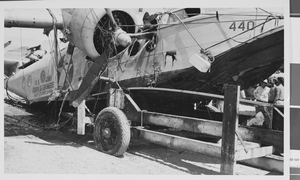
Photograph of Howard Hughes's Sikorsky S-43 at Lake Mead, circa 1943
Date
1943
Archival Collection
Description
A close up view of a propeller on Howard Hughes's Sikorsky S-43 on the shore of Lake Mead after being retrieved from the water.
Image
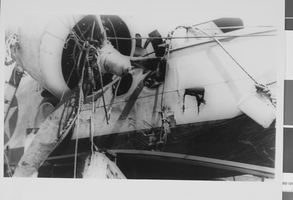
Photograph of Howard Hughes's Sikorsky S-43 at Lake Mead, circa 1943
Date
1943
Archival Collection
Description
A close up view of a propeller on Howard Hughes's Sikorsky S-43 on the shore of Lake Mead after being retrieved from the water.
Image
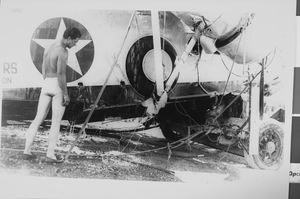
Photograph of Howard Hughes's Sikorsky S-43 at Lake Mead, circa 1943
Date
1943
Archival Collection
Description
A close up view of the side of Howard Hughes's Sikorsky S-43 on the shore of Lake Mead after being retrieved from the water.
Image
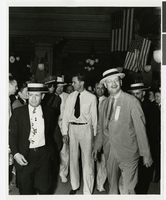
Photograph of Howard Hughes being escorted into the Rico Hotel, Houston, Texas, July 30, 1938
Date
1938-07-30
Archival Collection
Description
Howard Hughes (center) is escorted into the lobby of the Rico Hotel, Houston, Texas
Image
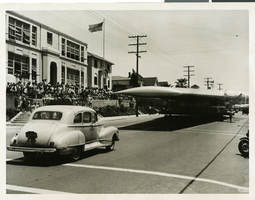
Photograph of a section of Howard Hughes' Flying Boat being moved to the Los Angeles Harbor, June 1946
Date
1946
Archival Collection
Description
A section of Howard Hughes' "Spruce Goose" or "Flying Boat" being moved (with a police escort) from the Hughes Aircraft plant in Culver City, California to Terminal Island in the Los Angeles Harbor where the plane was assembled in June of 1946.
Image
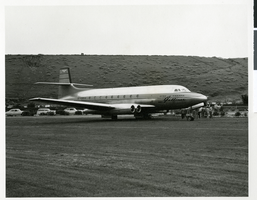
Photograph of a jet plane designed by Howard Hughes, circa 1940s-1950s
Date
1940 to 1959
Archival Collection
Description
A plane, designed by Howard Hughes, parked on a field with a group of people in the foreground. The plane is numbered, CF-EJO-X, and it is an Avro Canada Jetline.
Image
Photograph of painting with Howard Hughes in flight suit, undated
Level of Description
File
Archival Collection
Hughes Electronics Corporation Records
To request this item in person:
Collection Number: MS-00485
Collection Name: Hughes Electronics Corporation Records
Box/Folder: Box 01
Collection Name: Hughes Electronics Corporation Records
Box/Folder: Box 01
Archival Component
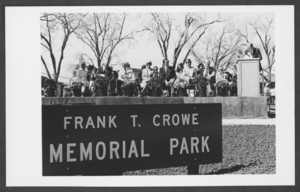
Photograph of ceremony at Frank T. Crowe Memorial Park, Boulder City, Nevada, March 15, 1981
Date
1981-03-15
Archival Collection
Description
A ceremony at Frank T. Crowe Memorial Park marks Boulder City's 50th anniversary.
Image

Photograph of people at Frank T. Crowe Memorial Park, Boulder City, Nevada, March 15, 1981
Date
1981-03-15
Archival Collection
Description
Dignitaries and guests at Frank T. Crowe Memorial Park on Boulder City's 50th anniversary.
Image
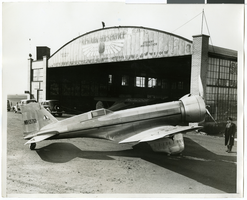
Photograph of Howard Hughes' Northrop Gamma Racer in Newark, New Jersey, January 14, 1936
Date
1936-01-04
Archival Collection
Description
A view of the side of Howard Hughes' Northrop Gamma Racer.
Image
Pagination
Refine my results
Content Type
Creator or Contributor
Subject
Archival Collection
Digital Project
Resource Type
Year
Material Type
Place
Language
Records Classification
